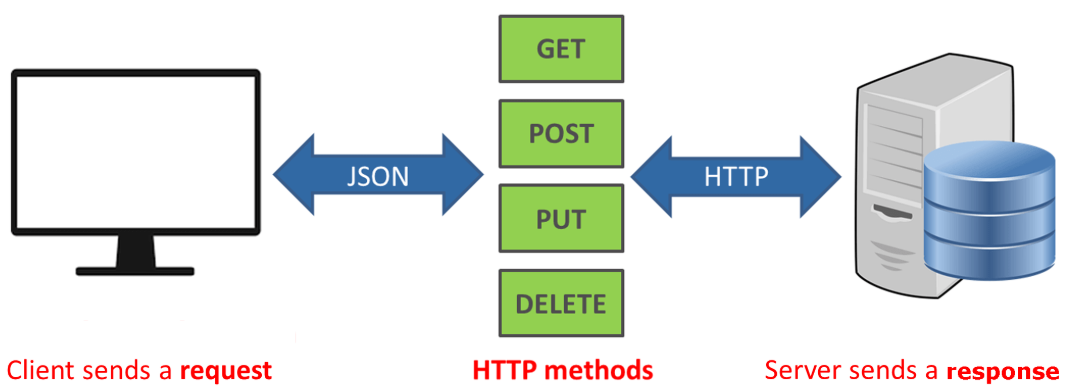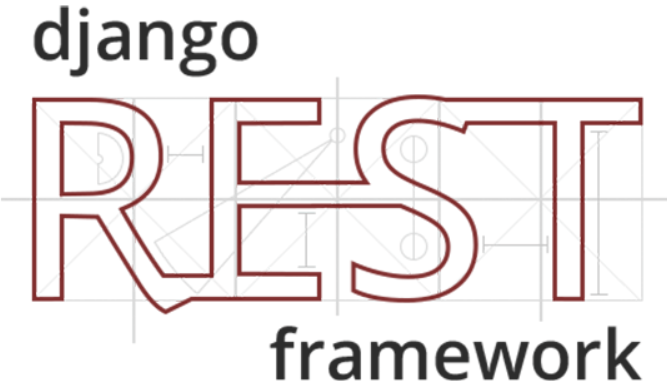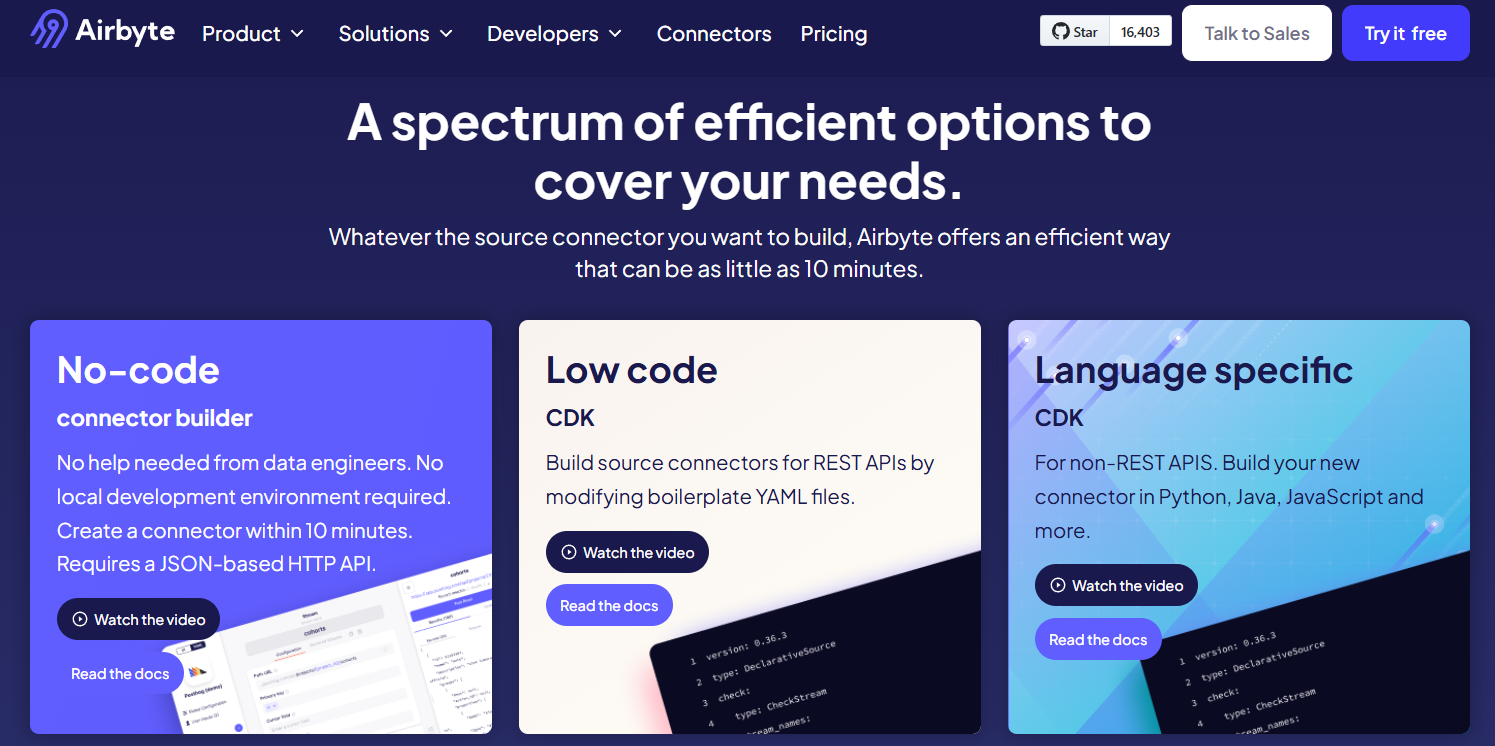Python & REST API: 4 Practical Use Cases for Data Engineer
Summarize this article with:
✨ AI Generated Summary
Python and REST APIs combine to create scalable, high-performance applications by leveraging REST’s stateless architecture and Python’s asynchronous capabilities. Key benefits include:
- Stateless design improving scalability and caching for faster responses.
- Asynchronous processing with frameworks like FastAPI for handling thousands of concurrent requests.
- Platform independence and architectural flexibility supporting microservices and independent scaling.
- Automatic validation and type safety via modern frameworks enhancing reliability and maintainability.
Popular Python REST frameworks include Flask (lightweight), Django REST Framework (enterprise-ready), FastAPI (high-performance async), Falcon (minimalist), Pyramid (flexible), and Bottle (simple prototyping). Security best practices involve token-based authentication (JWT, OAuth2), input validation, rate limiting, and monitoring. Comprehensive testing (unit, integration, contract, performance, security) and automated documentation improve API quality and developer experience. Integration tools like Airbyte simplify data workflows by providing pre-built connectors, real-time sync, and enterprise-grade governance.
REST API, or Application Programming Interface, represents a set of rules and regulations to allow seamless communication between various applications. The REST—representational state transfer—component highlights a software architecture that defines the underlying working principles of the API.
Python and REST work together seamlessly to create powerful, scalable applications. REST APIs follow key principles including statelessness, uniform interface, and client-server architecture, making them ideal for modern web development and data integration scenarios.
What Are the Key Benefits of Using Python and REST Together?
Combining Python’s simplicity with REST’s stateless architecture creates a powerful foundation for building scalable, flexible, and high-performing applications.
Enhanced Scalability Through Stateless Design
REST APIs' statelessness optimizes client-server interactions by providing complete context to each request. If the server doesn't require past information, REST API removes unnecessary workloads, reducing the server's overhead.
When working with REST API in Python, client-server interactions are reduced by an efficient caching procedure, which enhances data retrieval time and can improve response performance by up to 60%.
Superior Performance with Asynchronous Processing
Leveraging REST API in a Python environment enables you to utilize asynchronous frameworks like asyncio to execute tasks simultaneously, enhancing performance. Modern asynchronous frameworks like FastAPI can handle thousands of concurrent requests efficiently, providing 3-5× performance improvements over traditional synchronous approaches.
Another method to improve performance is using Python parallel-processing libraries like multiprocessing to perform multiple tasks at once.
Platform Independence and Technology Flexibility
REST API is independent of the technologies used on the server and the client side. For example, you can write client-side applications in Python without understanding the server-side processes, which might be written in another language.
Changing the technology on either side doesn't affect the communication between them.
Architectural Flexibility and Microservices Support
Working with REST API provides you with more flexibility due to the decoupling principle between the client and server. Multiple layers between both ends hide the flow of data.
You can even change the database layer without rewriting the application logic. This architectural approach supports microservices patterns and enables independent scaling of different system components.
Type Safety and Automatic Validation
Modern Python REST API frameworks like FastAPI leverage Python's type hints to provide automatic request validation and response serialization. This approach significantly reduces runtime errors while improving code maintainability and documentation quality.
How Do HTTP Methods Work in Python and REST API Development?

REST APIs use HTTP methods to determine what actions they are supposed to perform on the web-server resources. These resources represent data available in a web service, which can be accessed and transformed according to the requirement.
To interact with REST APIs in Python, you can use a library such as requests, which empowers you to send HTTP requests to the server and receive responses. HTTP methods like GET, POST, PUT, PATCH, and DELETE encourage you to manage the state of resources available in the web server. Proper semantic usage of these methods is crucial for creating predictable and maintainable APIs.
- GET – Retrieve data from an API (read-only). This method should be safe and idempotent, meaning it doesn't modify server state and produces the same result when called multiple times.
- POST – Add or update information at the endpoint. Used for creating new resources or performing operations that change server state.
- PUT – Replace existing resources with new data. This method is idempotent and should replace the entire resource.
- PATCH – Modify certain values in an existing resource (partial update). Use this for updating specific fields without affecting the entire resource.
- DELETE – Remove a resource (usually authenticated via an API key). This method should be idempotent, producing the same result regardless of how many times it's called.
Understanding these HTTP methods is fundamental when working with any Python REST API framework, as they form the foundation for RESTful communication patterns.
What Are the Primary Use Cases for Python REST APIs in Data Engineering?
Python REST APIs act as a central link in data engineering, connecting systems and making automation, real-time workflows, and analytics easier to implement.
Data Pipeline Creation and Automation
Using REST APIs in Python is beneficial for automating extraction, transformation, and loading (ETL) operations between different sources. Building a data pipeline is crucial to generating impactful insights.
Modern data platforms require efficient API integration to handle complex data workflows and maintain data quality across multiple systems.
Example: A data pipeline migrates information from a finance-management tool like NetSuite to a data warehouse like BigQuery. Python can extract data from the NetSuite API, apply business logic, and load it into BigQuery—all in a single environment.
Advanced implementations can include error handling, retry mechanisms, and data validation to ensure pipeline reliability.
Real-Time Data Streaming and Processing
With Python REST API, you can fetch real-time data to deliver updated insights instantly. By leveraging Python's streaming data libraries, such as kafka-python and apache-flink, you can handle different data streams for applications.
Modern streaming architectures often combine REST APIs with event-driven patterns to create responsive data systems.
Example: Banking applications can identify fraudulent transactions by accessing transactional-database APIs, then applying machine-learning models (e.g., logistic regression) in Python to flag suspicious activities. Real-time processing enables immediate fraud detection and prevention, significantly reducing financial losses.
Database Management and Schema Operations
Python REST APIs like DB-API 2.0 enable you to interact with database management systems for executing SQL queries, handling transactions, and retrieving data—without writing separate code for different databases.
This approach supports database abstraction and enables consistent data management across diverse storage systems.
Advanced Analytics and Business Intelligence
By extracting data using REST API in Python, you can perform advanced analytics and generate actionable business insights. APIs provide standardized access to data sources, enabling analysts to focus on insights rather than data access complexity.
Example: Extract past-transaction data from e-commerce tools like Shopify to design targeted marketing campaigns. Or pull raw coin data from a crypto exchange or a stock screener to visualize a portfolio's net profit per coin. Advanced analytics can include customer segmentation, predictive modeling, and automated reporting systems.
Advanced analytics can include customer segmentation, predictive modeling, and automated reporting systems.
Which Python REST API Framework Should You Choose for Your Project?
1. Flask RESTful

Flask RESTful is a lightweight micro-framework that makes it easy to build fast, flexible APIs—especially if your web apps already use Flask. This Python REST API framework provides excellent flexibility for custom implementations and integrates seamlessly with existing Flask applications. Flask's simplicity makes it ideal for prototyping and small-to-medium scale applications where maximum control over architecture is desired.
Flask excels in scenarios requiring custom business logic, specific middleware implementations, or integration with specialized third-party libraries. However, developers must handle many implementation details manually, including input validation, serialization, and documentation generation.
2. Django REST Framework

Django REST Framework integrates tightly with Django models and includes features like ViewSets and Serializers to accelerate API development. This comprehensive Python REST API framework provides robust security features, comprehensive authentication mechanisms, and extensive serialization capabilities. It's particularly well-suited for enterprise applications requiring complex permissions, detailed audit trails, and integration with existing Django applications.
The framework's built-in features include automatic API documentation, extensive authentication options, comprehensive permission systems, and sophisticated serialization capabilities. Django REST Framework is ideal for complex applications where development speed and comprehensive features outweigh performance considerations.
3. FastAPI

FastAPI is a modern, high-performance framework that supports async code and automatic data validation via Python type hints. This cutting-edge Python REST API framework has gained significant adoption, with usage growing substantially due to its superior performance characteristics and developer-friendly features. FastAPI can handle over 45,000 requests per second, making it one of the fastest Python web frameworks available.
FastAPI's automatic documentation generation through OpenAPI specifications, comprehensive type safety, and native async support make it ideal for high-performance applications. The framework's integration with Python's type system provides automatic validation, serialization, and interactive API documentation with minimal configuration.
Major technology companies including Uber, Netflix, and Microsoft have adopted FastAPI for production applications, demonstrating its enterprise readiness and scalability potential.
4. Falcon

Falcon is a minimalist ASGI/WSGI framework that emphasizes reliability, accuracy, and performance, with built-in HTTP caching. This Python REST API framework is designed specifically for building fast, scalable APIs and microservices. Falcon's lightweight architecture makes it particularly suitable for high-throughput applications where performance is the primary concern.
The framework provides efficient request routing, automatic response serialization, and comprehensive middleware support while maintaining minimal overhead. Falcon is ideal for applications requiring maximum performance with minimal framework interference.
5. Pyramid

Pyramid is a full-stack framework offering multiple architectural patterns (MVC, MVP). Core features include routing, views, authentication, and authorization. This flexible Python REST API framework allows developers to choose components based on application requirements, providing a balanced approach between framework guidance and implementation freedom.
Pyramid's configuration system and extensible architecture make it suitable for complex applications requiring custom architectural patterns. The framework provides comprehensive security features and flexible templating options while maintaining good performance characteristics.
6. Bottle

Bottle is a single-file, dependency-free framework ideal for small-to-medium apps and rapid prototyping. This minimalist Python REST API framework requires no external dependencies and can be deployed easily in resource-constrained environments. Bottle's simplicity makes it perfect for educational purposes, quick prototypes, and microservices that require minimal overhead.
The framework provides essential features including routing, templating, and basic middleware support while maintaining an extremely small footprint. Bottle is ideal for developers who need a simple, straightforward approach to API development without complex configuration requirements.
How Can You Implement Security Best Practices for Python REST APIs?
Security represents one of the most critical aspects of REST API development, with inadequate implementation leading to serious vulnerabilities that can compromise entire systems. Understanding and implementing comprehensive security measures is essential for protecting data and maintaining user trust.
Authentication and Authorization Strategies
Proper authentication and authorization form the foundation of API security. Token-based authentication using JSON Web Tokens (JWT) provides stateless authentication that scales well across distributed systems. However, implementation requires careful attention to token validation, expiration handling, and secure storage practices.
OAuth2 integration offers robust authentication capabilities for third-party integrations while maintaining user privacy and security. Modern Python frameworks provide comprehensive OAuth2 support, but implementation complexity requires thorough understanding of security implications and proper configuration management.
Multi-factor authentication should be considered for sensitive APIs, providing additional security layers beyond simple credential validation. API key authentication offers simplicity for service-to-service communication but requires proper key management, rotation, and scope limitation practices.
Input Validation and Data Protection
Comprehensive input validation prevents injection attacks and ensures data integrity throughout the API processing pipeline. Python frameworks like FastAPI provide automatic validation through type hints, while Django REST Framework offers serializer-based validation mechanisms.
All user input must be validated for type, length, format, and range before processing. SQL injection prevention requires parameterized queries and proper ORM usage, while command injection vulnerabilities can be prevented by avoiding system command execution with user-provided input.
Data exposure risks can be mitigated through proper serialization controls and field-level permissions. APIs should implement data transfer objects (DTOs) that control exactly what information is exposed to consumers, preventing accidental disclosure of sensitive information.
Rate Limiting and Monitoring
Rate limiting protects APIs from abuse while ensuring fair resource allocation across legitimate users. Implementation strategies include token bucket algorithms for burst traffic handling and sliding window approaches for precise rate control.
Comprehensive monitoring and logging provide visibility into API usage patterns, security events, and potential threats. Security monitoring should track authentication failures, unusual request patterns, and access attempts for protected resources.
Automated threat detection using machine learning algorithms can identify anomalous behavior patterns and potential security incidents in real-time, enabling rapid response to emerging threats.
What Are Effective Testing and Documentation Strategies for Python REST APIs?
Comprehensive testing and documentation strategies are essential for maintaining API quality, reliability, and developer adoption. Well-tested APIs with excellent documentation significantly reduce integration time and support overhead while improving overall user satisfaction.
Multi-Layered Testing Approaches
Unit testing for individual API endpoints validates functionality, error handling, and business logic implementation. Python's unittest framework and pytest provide comprehensive testing capabilities for different framework implementations. Testing should cover various HTTP methods, authentication scenarios, and edge cases.
Integration testing validates end-to-end workflows and system interactions, ensuring that APIs work correctly within broader application contexts. Contract testing verifies API compatibility with consumer expectations, preventing breaking changes from disrupting client applications.
Performance testing identifies scalability limits and optimization opportunities under realistic load conditions. Load testing tools can simulate thousands of concurrent users to validate API behavior under stress and identify potential bottlenecks before production deployment.
Security testing should validate authentication mechanisms, authorization controls, and input validation to ensure comprehensive protection against common attack vectors. Automated security scanning can identify vulnerabilities in dependencies and configuration settings.
Documentation and Developer Experience
Interactive documentation provides significant value by allowing developers to test endpoints directly within the documentation interface. FastAPI's automatic OpenAPI documentation generation creates comprehensive, testable documentation with minimal configuration overhead.
Documentation must include endpoint descriptions, parameter specifications, example requests and responses, error code explanations, authentication flow diagrams, and practical code examples in multiple programming languages. The documentation should remain synchronized with code changes through automated processes.
API versioning strategies enable controlled evolution while maintaining backward compatibility. Clear versioning policies, deprecation timelines, and migration guides help consumers adapt to changes while maintaining system stability.
Comprehensive error handling with standardized response formats improves developer experience by providing consistent, actionable error information. Error responses should include sufficient detail for debugging while avoiding exposure of sensitive system information.
How Can You Use REST APIs with Airbyte for Data Integration?

In real-world applications, data is often spread across different platforms. Consolidating this data can be challenging, but Airbyte simplifies the process by providing enterprise-grade data integration capabilities that eliminate the complexity of custom API integrations while maintaining complete control over data sovereignty and security.
Airbyte transforms how organizations approach data integration by solving the fundamental problem of effectively managing and integrating data across diverse enterprise environments. Rather than forcing organizations into expensive, inflexible proprietary solutions or complex custom integrations, Airbyte provides:
- Simplified REST API Interactions: The Public APIs source connector supports full-refresh syncs (e.g., Public APIs → Amazon S3) with comprehensive error handling and retry mechanisms.
- AI-Powered Connector Builder: An AI assistant that auto-fills configuration fields and accelerates custom connector development.
- Change Data Capture (CDC): Incrementally replicate data changes with minimal impact on source systems, supporting real-time data synchronization requirements.
- Support for Vector Databases: Native integration with Pinecone, Weaviate, Chroma, and other modern vector databases for AI and machine learning workflows.
- Self-Managed Enterprise Edition: Complete control over infrastructure with advanced governance features including multitenancy, RBAC, PII masking, and SLAs in your own VPC.
- PyAirbyte: A Python library that pulls data with Airbyte connectors directly into SQL-compatible caches for use with Pandas, LangChain, and other data science tools.
Airbyte's open-source foundation eliminates licensing costs while providing over 600+ pre-built connectors that reduce custom development overhead. The platform processes over 2 petabytes of data daily across customer deployments, demonstrating enterprise-scale performance and reliability.
For organizations modernizing from legacy ETL platforms, Airbyte provides deployment flexibility across cloud, hybrid, and on-premises environments while maintaining enterprise-grade security and governance capabilities. This approach enables gradual migration paths that minimize business disruption while delivering immediate value through improved data accessibility and integration speed.
Conclusion
Using Python REST API is an effective way to enable seamless communication between different applications within your workflow. REST's stateless nature offers independence between API calls, while Python provides robust features to handle raw data with exceptional flexibility and performance.
The choice of Python REST API framework significantly impacts development productivity, application performance, and long-term maintainability. Modern frameworks like FastAPI offer superior performance characteristics with automatic documentation generation, while established frameworks like Django REST Framework provide comprehensive enterprise features. Understanding the trade-offs between different approaches enables informed architectural decisions that align with specific project requirements.
Security considerations, comprehensive testing strategies, and effective documentation practices are essential for creating production-ready APIs that provide excellent developer experiences. By implementing security best practices, multi-layered testing approaches, and automated documentation generation, development teams can create reliable, secure, and maintainable REST APIs that scale with business requirements.
The integration of Python REST APIs with modern data platforms like Airbyte demonstrates how organizations can leverage API technologies to create sophisticated data integration workflows that support business growth while maintaining operational efficiency and data governance requirements.
Frequently Asked Questions
What Is the Difference Between Python and REST API?
Python is a programming language, while REST API is an architectural style for building web services. Python can be used to create, consume, or interact with REST APIs through various frameworks and libraries like Flask, Django, FastAPI, or the requests library.
How Do I Choose Between FastAPI and Django REST Framework?
Choose FastAPI for high-performance applications requiring automatic documentation and type validation. FastAPI excels at modern async applications and microservices. Choose Django REST Framework for enterprise applications with complex business logic, extensive admin interfaces, and integration with existing Django projects.
What Are the Best Security Practices for Python REST APIs?
Implement authentication (JWT, OAuth2), input validation using frameworks like Pydantic, HTTPS encryption, rate limiting, and comprehensive logging. Always validate user input, use parameterized queries to prevent SQL injection, and implement proper error handling that doesn't expose sensitive information.
How Can I Optimize Python REST API Performance?
Use asynchronous frameworks like FastAPI or async Flask, implement caching strategies (Redis, Memcached), optimize database queries, use connection pooling, and implement proper pagination for large datasets. Consider using load balancing and CDNs for static content.
What Testing Strategies Work Best for Python REST APIs?
Implement multiple testing layers: unit tests with pytest for individual functions, integration tests for API endpoints using TestClient, contract testing for API specifications, performance testing with tools like locust, and security testing with automated scanners. Mock external dependencies for reliable test execution.

.webp)
